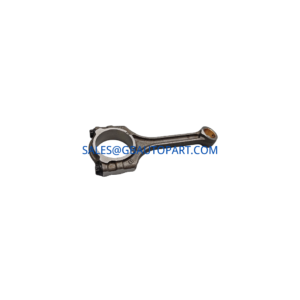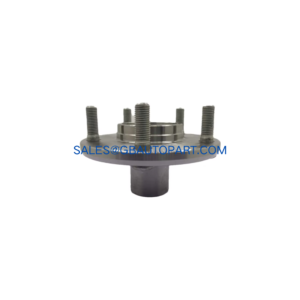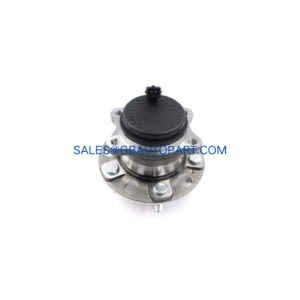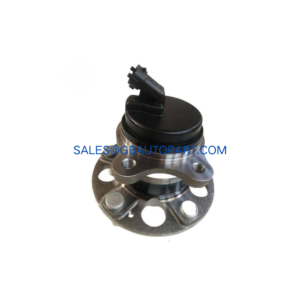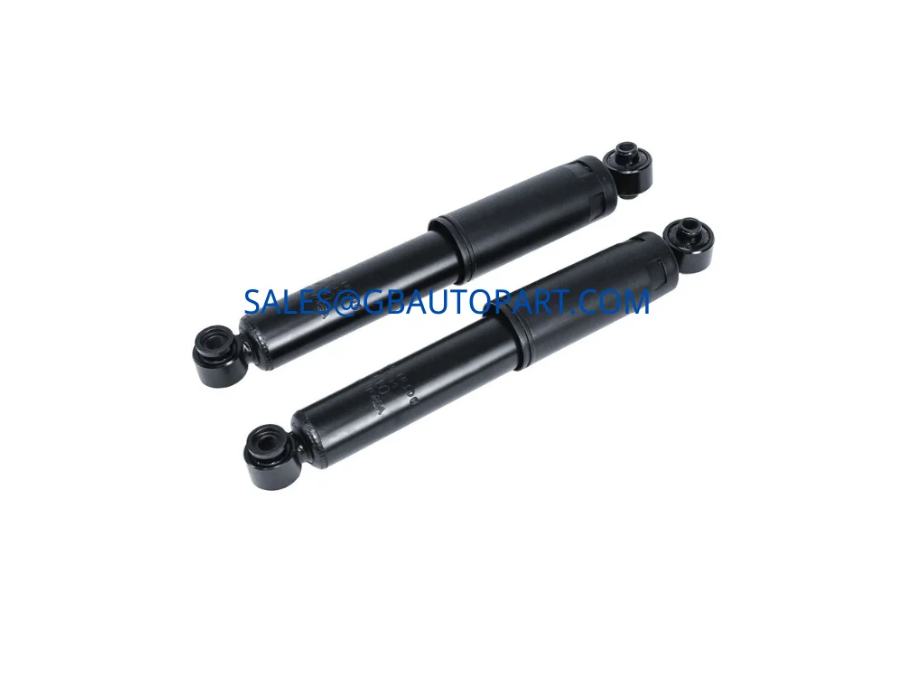
The performance and safety of any vehicle heavily rely on the integrity of its suspension system. Among the myriad of components working in concert, the suspension strut assembly stands out as a critical player. Specifically, the part number 55300-1R300 identifies an essential suspension component primarily used in various Hyundai and Kia models. Understanding the precise fun-ction and importance of this part is crucial for mechanics, auto-parts retailers, and vehicle owners committed to maintaining their car’s optimal ride quality and handling. This in-depth guide will dissect the role of the 55300-1R300 and highlight its substantial value to the vehicle’s dynamic performance.
The Dual Role of the 55300-1R300 in Vehicle Suspension

At its core, the 55300-1R300 component is a complete strut assembly, often referred to as a shock absorber with an integrated spring seat and mounting hardware. Its primary function is a dual-purpose marvel—it simultaneously manages two opposing forces: supporting the vehicle’s weight and dampening the impact of road irregularities.
1. Supporting the Vehicle and Maintaining Ride Height
The strut assembly, including the coil spring wrapped around the shock absorber, is a structural component of the vehicle’s chassis. It bears the weight of the car, ensuring the correct ride height is maintained. This height is essential for everything from ground clearance to proper alignment geometry. Without the robust support of a quality strut like the 55300-1R300, the vehicle would sag, impacting tire wear and overall handling.
2. Dampening Vibrations and Controlling Spring Oscillation
The secondary, and arguably more complex, function is dampening. The internal hydraulic mechanism of the shock absorber component within the 55300-1R300 converts the kinetic energy of wheel and suspension movement into heat, which is then dissipated. When the wheel hits a bump, the coil spring compresses, storing energy. Without damping, this energy would cause the vehicle to bounce uncontrollably. Therefore, the strut’s hydraulic action is paramount for stopping the cyclical oscillation of the spring, ensuring the tire maintains consistent contact with the road surface. This continuous, controlled contact is the cornerstone of vehicle stability, traction, and braking efficiency.
Technical Specifications and Key Features of the 55300-1R300
The 55300-1R300 is engineered to meet the specific requirements and loads of the Hyundai and Kia models it is designed for. Its effectiveness stems from several key design features:
A. Precision-Tuned Damping Characteristics
The internal valving within the strut is precisely calibrated. This means the resistance to fluid flow is tuned to the weight, center of gravity, and intended performance profile of the specific vehicles (e.g., Hyundai Accent, Kia Rio, depending on the exact application). This tuning is what gives the vehicle its characteristic ‘feel’—whether it’s a firmer, sportier ride or a softer, more comfort-oriented experience. The quality of the damping in the 55300-1R300 directly influences driver confidence and passenger comfort.
B. Integrated Assembly for Ease of Installation
A major benefit of the 55300-1R300 is that it is often provided as a complete, ready-to-install assembly. This means the strut, coil spring, strut mount, and boot are all pre-assembled. This design is a significant advantage for automotive technicians and DIY users alike. It eliminates the need for a dangerous spring compressor tool, making installation safer, quicker, and more straightforward, which in turn reduces labor costs.
C. Enhanced Durability and Longevity
The materials used in a high-quality replacement or OEM strut assembly like the 55300-1R300 are chosen for their resilience against harsh driving conditions. This includes robust steel components, high-quality seals to prevent oil leaks (a common cause of strut failure), and protective coatings to resist corrosion from road salt and moisture. This focus on durability ensures a long service life and reliable performance across various climates.
Why the 55300-1R300 is Critical for Safety and Performance
The performance of the 55300-1R300 is not merely about a comfortable ride; it is deeply intertwined with the vehicle’s safety features.
Enhancing Tire-to-Road Contact (Traction)
A failing strut allows the wheel to bounce excessively after hitting a bump. During that bounce cycle, the tire loses and regains contact with the road. While the tire is airborne, the driver loses steering control and, more importantly, braking power. The reliable operation of the 55300-1R300 ensures maximum tire contact by quickly settling the suspension, which is crucial for emergency maneuvers and ABS system functionality.
Maintaining Vehicle Stability and Handling
The struts play a significant role in managing body roll during cornering. A well-functioning 55300-1R300 helps keep the vehicle level, preventing excessive tilting and maintaining the correct alignment angles. This contributes to sharp, predictable steering response, making the car feel more stable and agile.
Preventing Premature Wear on Other Components
Worn-out struts can lead to a cascade of other problems. The constant, uncontrolled vibration and impact put undue stress on other suspension components, including ball joints, control arm bushings, and tie rod ends. By effectively managing road forces, the 55300-1R300 helps preserve the lifespan of these neighboring parts, leading to significant long-term savings in maintenance costs.
Identifying the Need for Replacement
Because the failure of the 55300-1R300 is gradual, vehicle owners may not immediately notice the decline in performance. However, several symptoms indicate that the strut assembly is worn out and requires replacement:
- Excessive Bouncing/Nose Dive: The vehicle continues to bounce several times after going over a large bump, or the front end dips sharply during braking.
- Fluid Leaks: Visible oil residue or grime on the strut body indicates that the internal seals have failed, and the damping fluid is leaking out.
- Uneven Tire Wear: Scalloping or cupping wear patterns on the tires are often a direct result of the wheel bouncing due to a lack of proper damping.
- Poor Handling: A noticeable looseness or sloppiness in the steering, or excessive body sway during turns.
- “Clunking” or Noise: Unusual noises coming from the wheel well, especially over bumps, can indicate a worn strut mount or a damaged component within the 55300-1R300 assembly.
When these symptoms appear, replacing the unit—ideally as a pair across the axle to ensure balanced performance—is the recommended course of action. Installing a high-quality replacement ensures the Hyundai or Kia vehicle returns to its original, safe, and comfortable operating specifications.
Conclusion: The Value Proposition of the 55300-1R300
The 55300-1R300 is far more than a simple metal part; it is an engineered system that is vital to the performance, safety, and longevity of compatible Hyundai and Kia vehicles. Its ability to simultaneously support the vehicle’s structure and expertly dampen road forces places it at the forefront of the suspension system’s functional hierarchy. For anyone purchasing a replacement part, focusing on the quality and precision of the 55300-1R300 ensures that their vehicle will continue to deliver the stable, comfortable, and safe driving experience it was designed for. Investing in a robust, reliable strut assembly is truly an investment in overall vehicle health and driver peace of mind.
Frequently Asked Questions (FAQ)
Q1: Can I replace just one 55300-1R300 strut, or do I need to replace both?
A: It is strongly recommended to replace struts in pairs (both the left and right side on the same axle). Since struts wear at similar rates, replacing only one can result in an unbalanced suspension, leading to poor handling, uneven tire wear, and compromised braking performance.
Q2: How long does the 55300-1R300 typically last?
A: The lifespan of a strut varies significantly based on driving conditions (e.g., rough roads, frequent heavy loading), but most last between 50,000 to 100,000 miles. Regular inspections should be part of the vehicle’s maintenance schedule after the 50,000-mile mark.
Q3: Is the 55300-1R300 considered a structural component?
A: Yes, the strut assembly, including the 55300-1R300, is a load-bearing, structural part of the vehicle’s suspension and chassis. It provides the upper mounting point for the wheel assembly, unlike a separate shock absorber which is non-structural.



